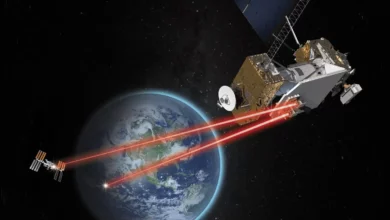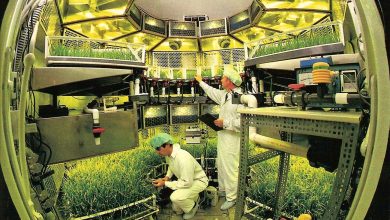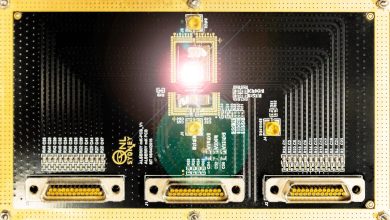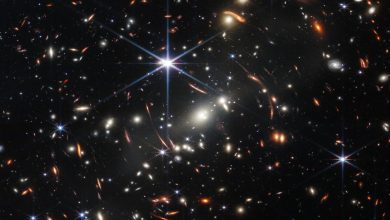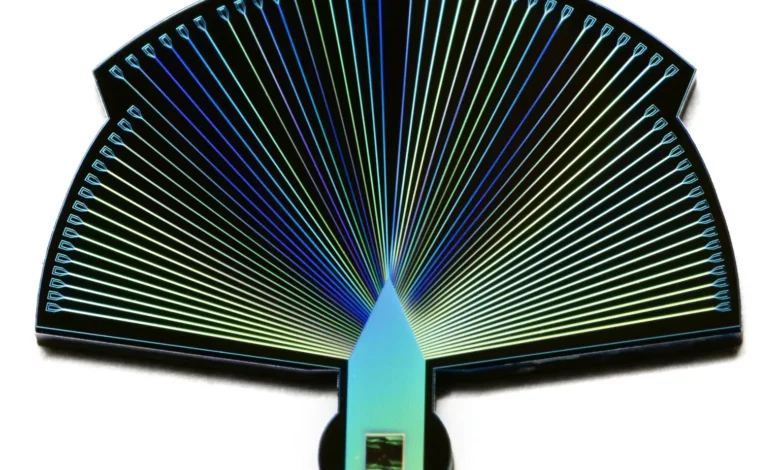
This close-up photograph shows an exquisitely sensitive single Performance-Enhanced Array for Counting Optical Quanta (PEACOQ) detector, which is being developed at JPL to detect single photons – quantum particles of light – at an extremely high rate. Credit: NASA/JPL-Caltech
NASA’s PEACOQ Quantum Detector Achieves World-Leading Milestone
A new JPL– and Caltech-developed detector could transform how quantum computers, located thousands of miles apart, exchange huge quantities of quantum data.
Quantum computers hold the promise of operating millions of times faster than conventional computers. But to communicate over long distances, quantum computers will need a dedicated quantum communications network.
To help form such a network, a device has been developed by scientists at NASA’s Jet Propulsion Laboratory and Caltech that can count huge numbers of single photons – quantum particles of light – with incredible precision. Like measuring individual droplets of water while being sprayed by a firehose, the Performance-Enhanced Array for Counting Optical Quanta (PEACOQ) detector is able to measure the precise time each photon hits it, within 100 trillionths of a second, at a rate of 1.5 billion photons per second. No other detector has achieved that rate.
“Transmitting quantum information over long distances has, so far, been very limited,” said PEACOQ project team member Ioana Craiciu, a postdoctoral scholar at JPL and the lead author of a study describing these results. “A new detector technology like the PEACOQ that can measure single photons with a precision of a fraction of a nanosecond enables sending quantum information at higher rates, farther.”
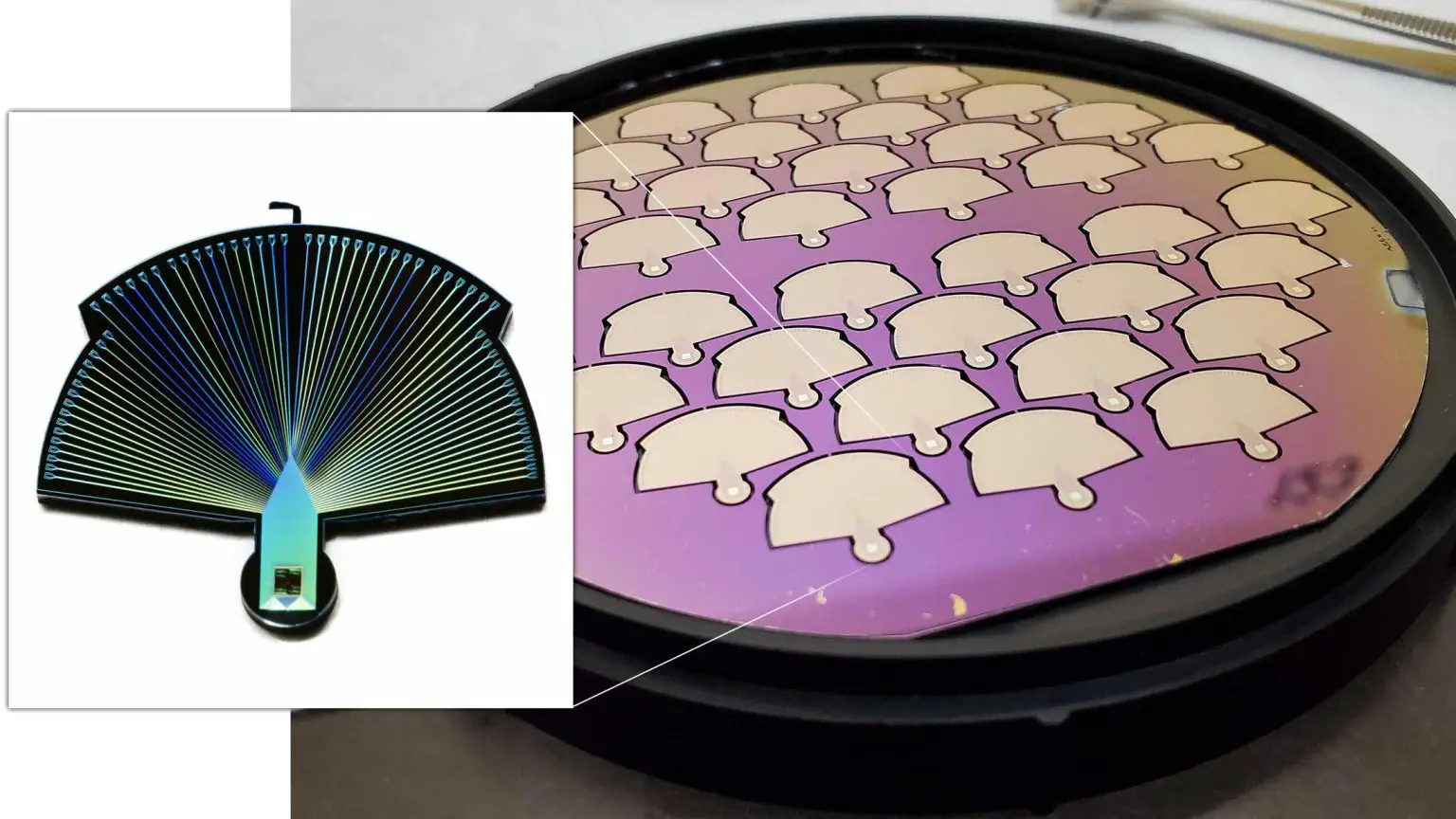
Dedicated Network Required
Conventional computers transmit data through modems and telecommunication networks by making copies of the information as a series of 1s and 0s, also called bits. The bits are then transmitted through cables, along optical fibers, and through space via flashes of light or pulses of radio waves. When received, the bits are reassembled to re-create the data that was originally transmitted.
Quantum computers communicate differently. They encode information as quantum bits – or qubits – in fundamental particles, such as electrons and photons, that can’t be copied and retransmitted without being destroyed. Adding to the complexity, quantum information transmitted through optical fibers via encoded photons degrades after just a few dozen miles, greatly limiting the size of any future network.
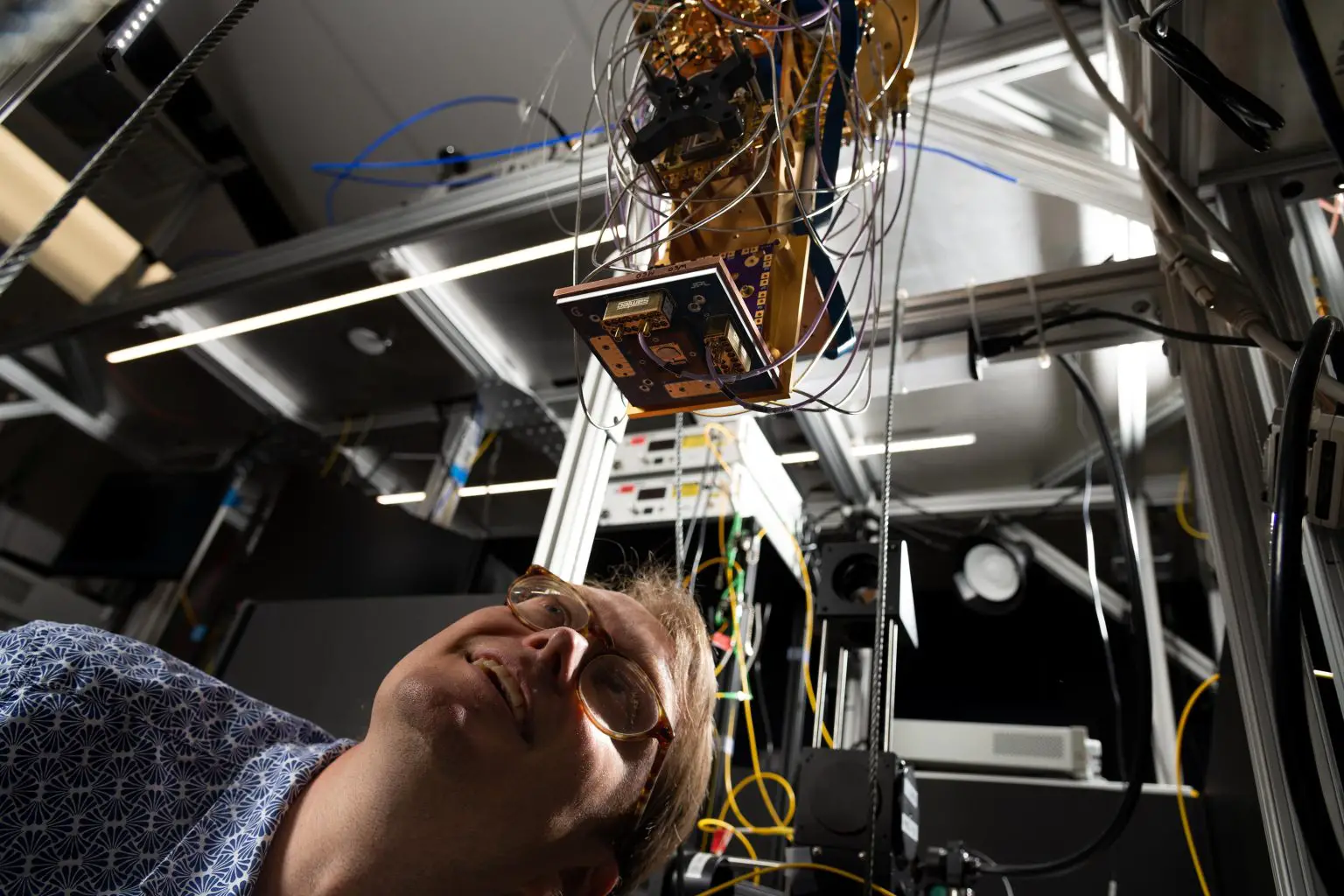
For quantum computers to communicate beyond these limitations, a dedicated free-space optical quantum network could include space “nodes” aboard satellites orbiting Earth. Those nodes would relay data by generating pairs of entangled photons that would be sent to two quantum computer terminals hundreds or even thousands of miles apart from each other on the ground.
Pairs of entangled photons are so intimately connected that measuring one immediately affects the results of measuring the other, even when they are separated by a large distance. But for these entangled photons to be received on the ground by a quantum computer’s terminal, a highly sensitive detector like PEACOQ is needed to precisely measure the time it receives each photon and deliver the data it contains.
Superconducting Plumage
The detector itself is tiny. Measuring only 13 microns across, it is composed of 32 niobium nitride superconducting nanowires on a silicon chip with connectors that fan out like the plumage of the detector’s namesake. Each nanowire is 10,000 times thinner than a human hair.
Funded by NASA’s Space Communications and Navigation (SCaN) program within the agency’s Space Operations Mission Directorate and built by JPL’s Microdevices Laboratory, the PEACOQ detector must be kept at a cryogenic temperature just one degree above absolute zero, or minus 458 degrees Fahrenheit (minus 272 degrees Celsius). This keeps the nanowires in a superconducting state, which is required for them to be able to turn absorbed photons into electrical pulses that deliver the quantum data.
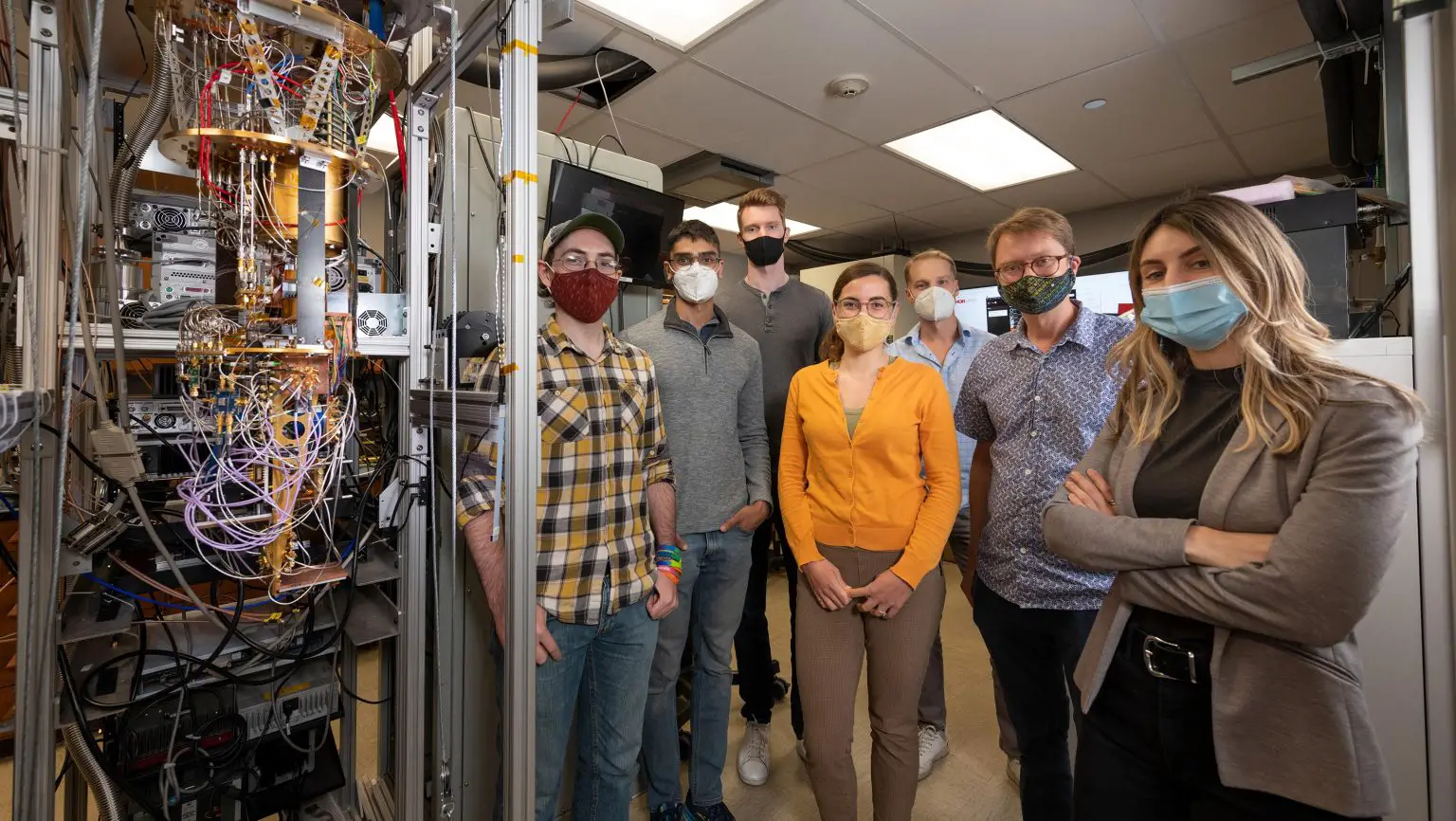
Although the detector needs to be sensitive enough for single photons, it is also designed to withstand being hit by many photons at once. When one nanowire in the detector is hit by a photon, it is momentarily unable to detect another photon – a period called “dead time” – but each superconducting nanowire is designed to have as little dead time as possible. Moreover, PEACOQ is equipped with 32 nanowires so that others can pick up the slack while one is “dead.”
“In the near term, PEACOQ will be used in lab experiments to demonstrate quantum communications at higher rates or over greater distances,” said Craiciu. “In the long term, it could provide an answer to the question of how we transmit quantum data around the world.”
Deep Space Test
Part of a wider NASA effort to enable free-space optical communications between space and the ground, PEACOQ is based on the detector developed for NASA’s Deep Space Optical Communications (DSOC) technology demonstration. DSOC will launch with NASA’s Psyche mission later this year to demonstrate, for the first time, how high-bandwidth optical communications between Earth and deep space could work in the future.
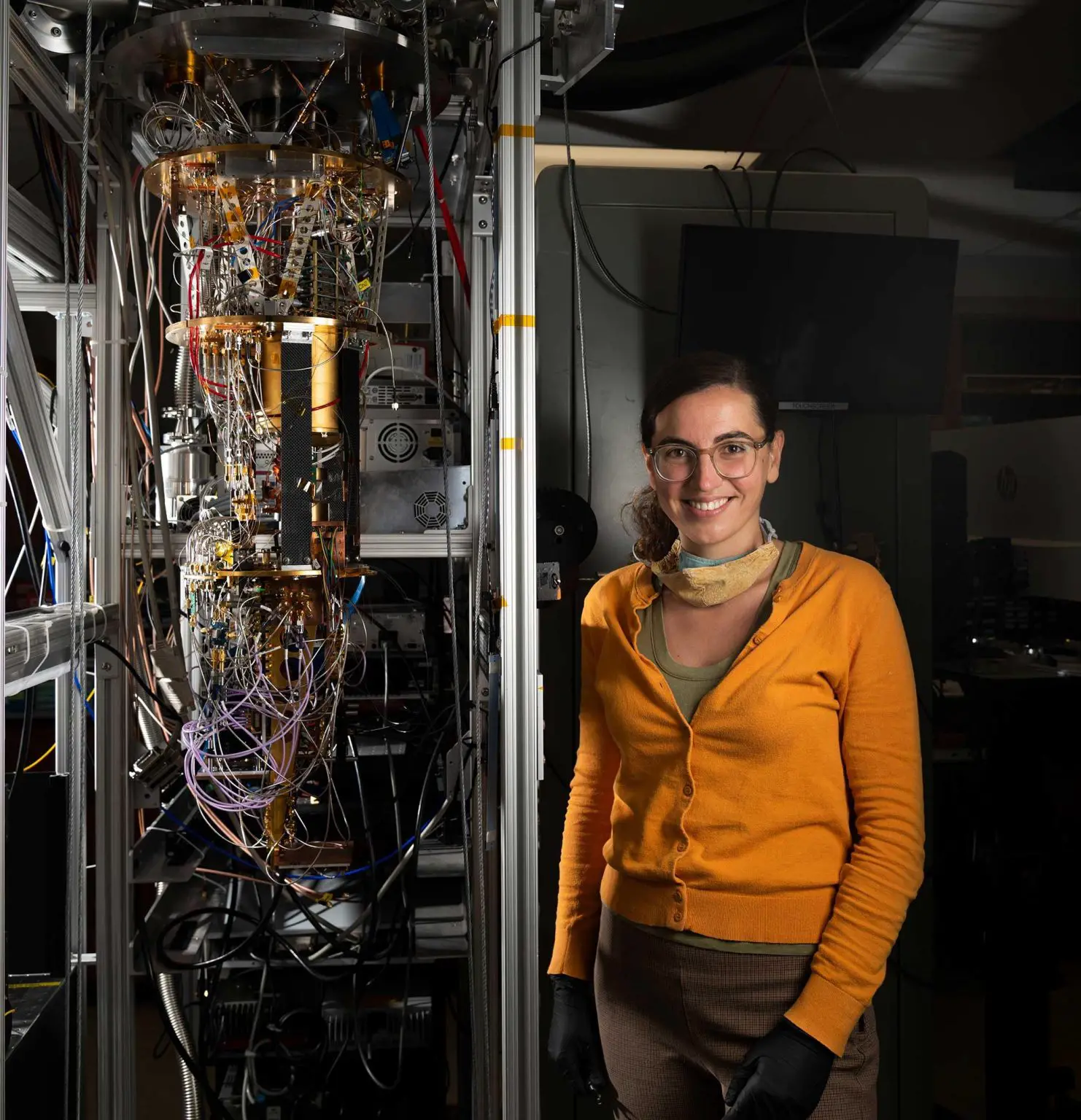
Credit: NASA/JPL-Caltech
While DSOC won’t communicate quantum information, its ground terminal at Caltech’s Palomar Observatory in Southern California requires the same extreme sensitivity in order to count single photons arriving via laser from the DSOC transceiver as it travels through deep space.
“It’s all kind of the same technology with a new category of detector,” said Matt Shaw, who leads JPL’s superconducting detector work. “Whether that photon is encoded with quantum information or whether we want to detect single photons from a laser source in deep space, we’re still counting single photons.”
Reference: “High-speed detection of 1550 nm single photons with superconducting nanowire detectors” by I. Craiciu, B. Korzh, A. D. Beyer, A. Mueller, J. P. Allmaras, L. Narvaez, M. Spiropulu, B. Bumble, T. Lehner, E. E. Wollman and M. D. Shaw, 26 January 2023, Optica.
DOI: 10.1364/OPTICA.478960
The Jet Propulsion Laboratory, a division of Caltech in Pasadena, California, manages DSOC for the Technology Demonstration Missions program within NASA’s Space Technology Mission Directorate and SCaN.


